This Filmmaker’s Next Documentary Will Be Literally Out of This World
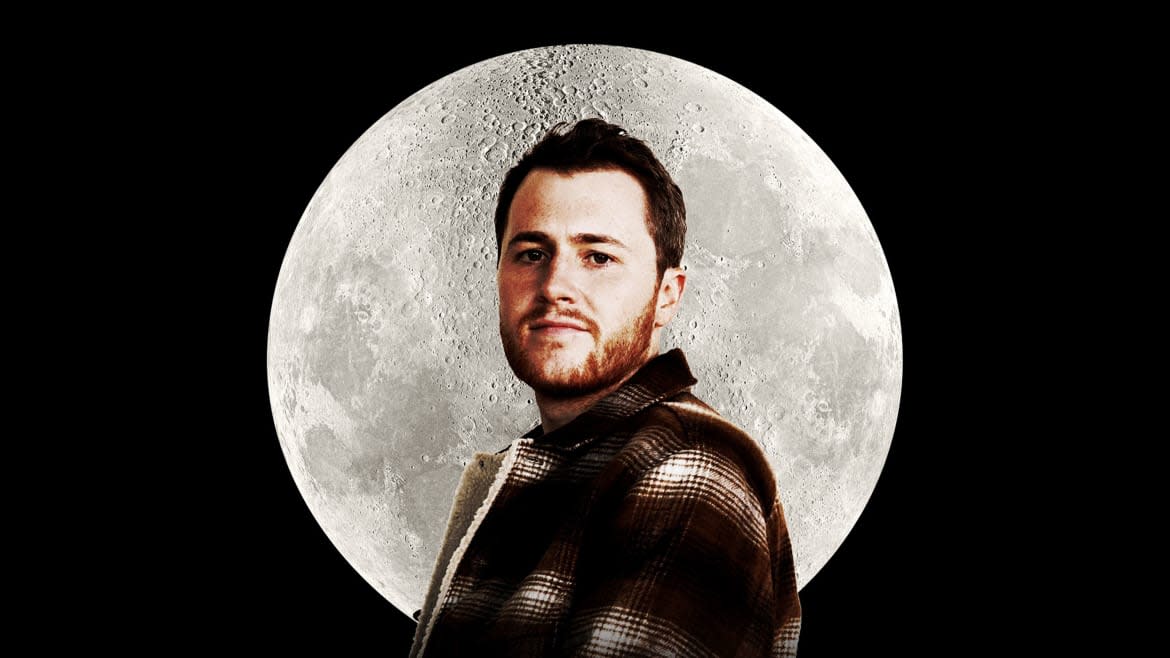
In a crowd, it would be very easy to lose track of Brendan Hall. The 28-year-old Brooklyn filmmaker has a very unassuming presence, and he likes it that way. As someone who makes documentaries, he would rather play observer, and focus attention on the subject at hand. Earnest and soft-spoken, he’s the one asking questions, for someone else’s life story, open to hearing something new and unheard.
But alas, on an extremely frigid February afternoon at the The Daily Beast’s office in New York, the tables were turned—and Hall found himself as the interviewee, not the interviewer as he is often accustomed to being. And that’s because some time in the next year or so, Hall is going into space.
He’ll be riding around in SpaceX’s Starship for six days as he and eight others take a trip around the moon and come back to Earth in the first civilian lunar mission. As a member of the dearMoon mission conceived and financed by Japanese billionaire Yusaku Maezawa, Hall will be part of a very small group of people who have had the privilege of going into space—and an smaller group who have had a chance to swing into lunar orbit and take a look at Earth’s natural satellite as only Apollo astronauts have.
Hall is in very eclectic company too. The crew includes celebrities DJ Steve Aoki and K-pop star Choi Seung Hyun (better known as TOP); Tim Dodd, a science communicator better known as Everyday Astronaut on YouTube; and backup crew member Kaitlyn Farrington, a snowboarder.
SpaceX’s Starship Explodes in Fireball Soon After Launch
Most of his crewmates were with him at Brownsville, Texas this week to watch SpaceX try to send Starship into orbit for the first time—which ended in a pretty wild explosion after the Starship failed to separate from the Super Heavy rocket (the launch marked the first time the two structures have ever been flown together). To be fair, SpaceX predicted a roughly 50 percent chance of success, and afterward Hall would tell me that “seeing this test made me more confident than ever” in SpaceX and the dearMoon mission. “The energy has been really positive and exciting.”
“I’m still not completely sure why I was chosen,” Hall told me. But he’s adamant that he doesn’t intend this opportunity to go to waste.
Not Your Average Origin Story
When it was announced in February 2017, dearMoon was a much different concept. Maezawa had bought a Crew Dragon mission (the capsule currently used to ferry astronauts to the International Space Station and back) to take him and one friend on a trip around the moon. The mission was originally supposed to launch in late 2018, using a Falcon Heavy rocket. Few people thought the timeline was realistic, though, partly since Crew Dragon wasn’t even operational at the time (development delays meant the spacecraft would not even fly humans into space until 2020).
In 2018, it was announced that the mission would forge ahead much later using Starship, the interplanetary spacecraft that SpaceX hopes will one day take humans to the moon and Mars—and which has been under development in literally explosive fashion.
All the while, Maezawa kept changing his mind for who would accompany him on dearMoon. He expanded the crew to eight. In 2019, he publicly invited director Damien Chazelle (Whiplash, First Man, Babylon) to come with him (Chazelle said he’d have to think about it, and eventually confirmed he wouldn’t be going). Maezawa then flirted with plans to make the mission a search for a “life partner,” soliciting applications from over 27,000 women for a chance to go with him on the mission. A “matchmaking documentary” would be filmed. Everyone was thoroughly creeped out, and Maezawa cancelled those plans in 2020.
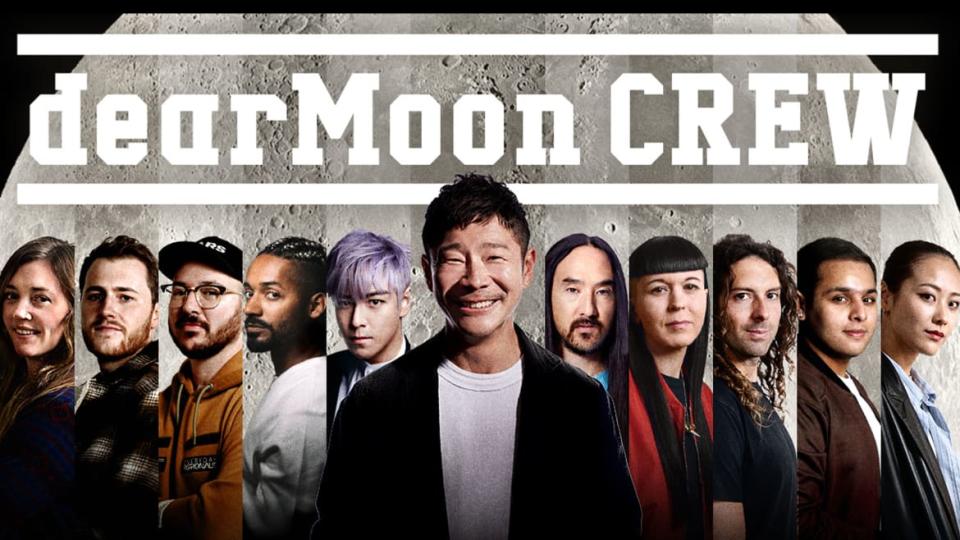
The dearMoon mission crew, led by Yusaku Maezawa
All of that paved the path to the version of the mission that opened the doors for Hall. Maezawa decided to pivot the mission into something centered around arts and creativity: dearMoon would take Maezawa and eight working artists to the moon. “I’m very thrilled to have these amazing people join me on my journey to the moon and excited to see what inspiring creations they come up with in space,” a quote from Maezawa reads on the dearMoon website.
dearMoon has finally settled down and turned Maezawa’s quixotic ambitions into something more realistic. Yes, Starship still needs to be proven (and its explosive end on the April 20 flight test leaves much to be desired). But, at least Maezawa has his crew.
Hall will be the first to tell you he may not be the most obvious candidate for this kind of mission, given that his experience with filmmaking is more terrestrial than extraterrestrial. His teenage years growing up in Marlborough, Connecticut were spent filming his buddies doing skateboard tricks and venturing out into the lakeside wilderness. Later, when he attended New York University to study film, Hall took on as many freelance jobs as he could. “I was filming everything,” from sweet 16 birthday parties to short films and clips for big foundations, he said.
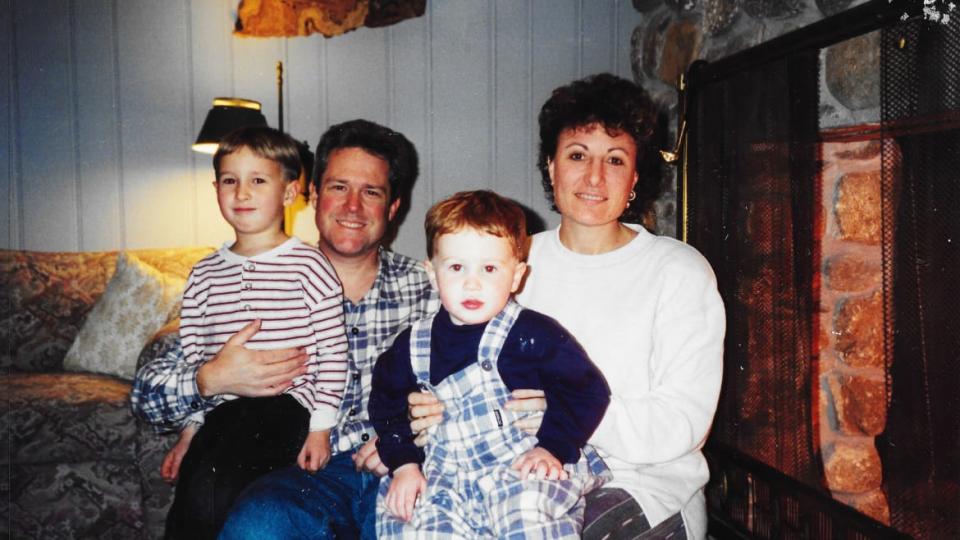
Hall grew up with his family in Marlborough, Connecticut, a town of just a few thousand people.
In the middle of college, Hall began to intern at a couple of production companies in LA. And that’s where his love of nature documentary filmmaking really solidified. Like many in the area, he loved the proximity to nearby hiking trails, as well as the opportunity to trek to national parks like Yosemite and Sequoia. He once visited the Grand Canyon and sat to watch the long sunset turn into a clear night sky lit up by the Milky Way.
“There was lightning cracking through the Milky Way and shooting stars everywhere,” he said. “It was just like magic on Earth. And that’s when I just realized that I love nature. I wanted to make films in nature and tell stories and try to travel.
“This is what makes me feel alive,” he added. “It makes me want to explore the world around me.”
One of the biggest projects of his career was his work on the 2017 documentary Bill Nye: Science Guy, directed by David Alvarado and Jason Sussberg. Hall was flown out to Siberia to shoot scientists looking for wooly mammoth bones with Stewart Brand, and lived on an ice sheet in Greenland with Bill Nye for 10 days. Another very formative experience was actually part of a branded film project for General Electric, which sent Hall to the Brazilian Amazon to film a mobile medical complex treating indigenous tribes and giving them medical care.
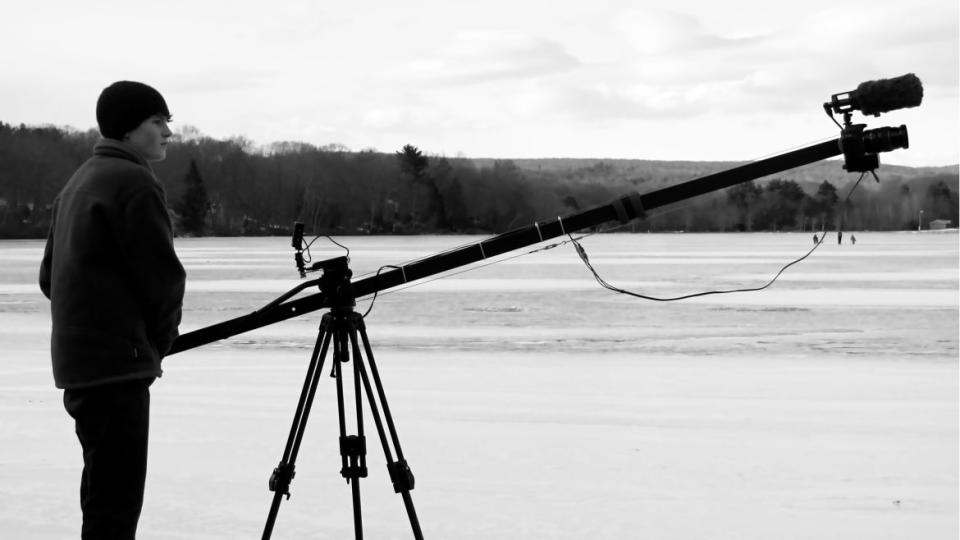
That trip included flying in a Blackhawk military helicopter with two doctors and visiting indigenous tribe members in the middle of extremely remote areas. As the helicopter picked up individuals and flew them into the air, Hall could see the absolute wonder and bewilderment these people felt seeing their homes from high up in the air for the first time ever.
It was a moment Hall that stuck with him so much that he wrote about in his dearMoon application. “That there was a really special experience that happens in that moment, as a filmmaker, getting to capture people seeing something like that for the first time,” and something he anticipates getting to witness firsthand as he and his crewmates fly into space.
These were experiences he never predicted he’d ever have. “I was just grateful, man. It’s still how I feel about all this space stuff.”
Selection Sunday
Hall recently directed Out There: A National Parks Story, a nature documentary about America’s public lands and the human stories that are immersed in these places. He’ll be debuting the film around festivals throughout the country later this year.
Out There stands in stark contrast to the project Hall intends to undertake when he jets off into space. But he’s also no stranger to the cosmos, having done night-sky photography and timelapses since he was a teen. “Night sky photography has always been my happy place,” he said. “I don’t do it for money, I just do it out of pure love.”
In submitting his application (which was open to the public), Hall wrote about his desire to make films that conveyed beauty and wonder to audiences, and to demonstrate how stories with a “human side” exist even in the most remote and uncharted places imaginable. And there was no bigger or rarer challenge than to do that with a film about space, made in space.
Still, Hall admits that he submitted his application to dearMoon in March 2021 mainly on a whim. “I just never even considered going up there just because it felt so out of the realm of possibility,” he said. “I didn’t in a million years think I’d actually get selected.”
So he was pretty stunned when his application moved through the next stages, which were a series of Zoom videos with members of the dearMoon team, including a former JAXA astronaut, Naoko Yamazaki. “That’s when I realized this was getting to be a big deal.” Group interviews with other applicants followed, then medical and psychological interviews at the University of California, Los Angeles. A few more in-person interviews followed in Houston, and then Europe.
“I just felt very comfortable during the process of being me, being Brandon,” he said. “There wasn’t anything that felt cheesy or superficial about it. I’m not going to do it if this feels like a reality show for a game show, or if I’m having to beg them to take me. That doesn’t feel like a healthy dynamic to put essentially my life on the line.”
Finally, around the Thanksgiving holidays in 2021, Hall had a Zoom call with Maezawa himself, in which the billionaire let Hall know he was going to space. “The whole world stopped for a moment,” Hall recalled.
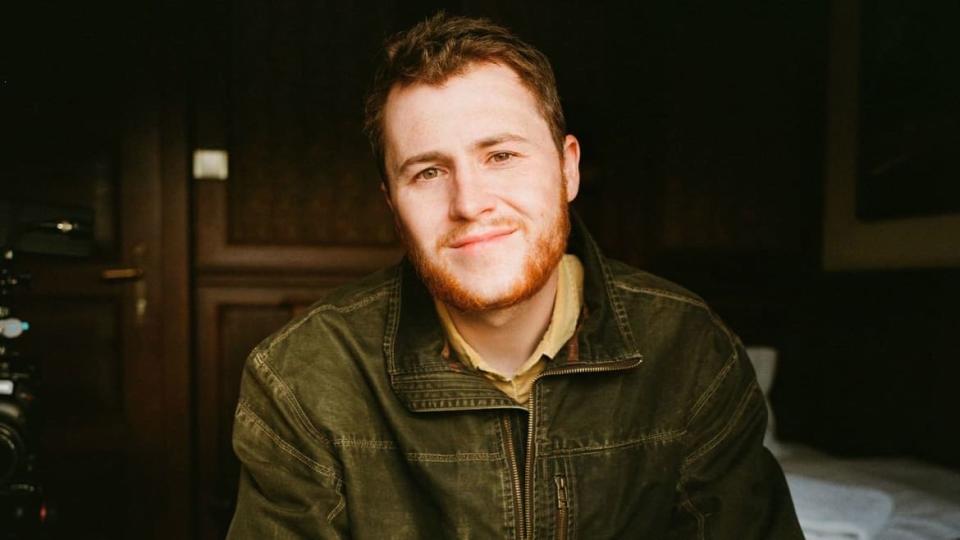
Hall, 28, has been making movies since getting a camcorder at the age of 12.
He accepted the offer, of course. He really believes that good things can and will come out of the mission. For his own ambitions, he’s hoping to pursue what he calls a “longform film project”—a feature-length documentary, or a series. He’s not yet certain what that will look like, but he’s hoping to really capture what he said is the “uniqueness of this group of people” and their different backgrounds and experiences suddenly thrown into a tight-knit space. He hopes to make something that captures a sense of wonder and inspiration.
“We want to learn as much as we can, and then kind of open that door for other missions and other filmmakers, artists, whoever it is to get to have an experience like that to ensure their voice,” he said.
New Space, New Suspicions
Though there is an immense amount of excitement for the mission from space obsessives and passersby alike, dearMoon isn’t without its share of criticism. Some of it is a symptom of the times. We’re seeing more and more people go into space like William Shatner, Michael Strahan, Richard Branson, and Jeff Bezos, to name a few. But it’s still the ultra-wealthy who hold the keys. Maezawa has already been to space once, after buying his way onto a 2021 Russian mission to the ISS. SpaceX’s other tourist flights have all been financed by multi-millionaires and billionaires. And the lucky less wealthy ones have been plucked entirely by the key-holders.
“It’s sort of interesting how these people are more less, like, selected for us,” Britt Duffy Adkins, an urban planner and the CEO of space urban planning company Celestial Citizen, told me. While access to space is opened to people who wouldn’t otherwise get the chance, it’s still the billionaire class that gets to decide. Even if there is a philanthropic arm, it’s still at their discretion.
“Earth is being told, ‘This is representative of society, of humanity,’ but the public doesn’t actually get to participate in that process,” she said. “We don’t actually know what the decision-making process behind it is, or what the rationale is. I have a fundamental problem with that power dynamic.”
Adkins does have a point, even specific to dearMoon. While Maezawa has selected under-the-radar creatives like Hall to join him, he’s also bringing with him some big names like Aoki—and it’s hard to dispel the notion that such celebrity status wasn’t a factor such picks. It also seems a bit strange to some that there aren’t any artists on the mission whose work is more closely tied with space, like a science fiction author might be.
Many on dearMoon also hail from countries that already boast regular access to space. As a general observation of the current industry, “very few people are going to space from countries that don’t necessarily have that same wealth and privilege and power dynamic in the space industry,” Adkins.
She isn’t sure exactly what kind of system could be implemented to make these processes more democratic, but she thinks it has to start with a bigger transparency over how these decisions are made over who goes up and who doesn’t. Otherwise, trying to say that a mission is being taken for the good of humanity as a whole feels mealy-mouthed.
Inside the Fight to Save Mars From Inheriting Earth’s Mess
And that raises the question over what the real point of dearMoon is. While Maezawa and SpaceX are promoting it to be a conduit by which to inspire new kinds of art and creativity, it’s not totally clear how this is supposed to be achieved.
That isn’t to say dearMoon is not a momentous endeavor on its own for the future of space travel. They are going to orbit the moon after all. “In one respect, it would be really a compelling shift—suddenly we had a crew of civilians that went [to the moon] and did it even before NASA sent an Artemis crew to the moon. So I think that in some ways, that would be a very paradigm shifting event,” said Adkins.
“The Most Incredible Honor”
The significance of what the first civilian mission to the moon might mean for space this century is not at all lost on Hall. “It’s just the most incredible honor filled with so much gratitude, and I can’t even comprehend it.” During our conversation, he said he often thinks back to his maternal grandfather’s family immigrating to America as Russian Jews, and how in two generations his grandson is now getting the chance to go into space. And that’s a privilege he doesn’t take lightly.
On a personal level, besides getting to experience microgravity, Hall is most looking forward to understanding and seeing what space does to him at a spiritual and emotional level.
“I’ve thought a lot about like, why are we on this planet? What are we doing? And I just can’t wait to feel that out there and ponder those things thousands and thousands of miles away,” he said. “A moment I’m thinking of a lot is when the surface of the moon fills out the window of our spacecraft. I can’t even imagine what that’s going to feel like.”
He’s especially bullish about the opportunity to share that with a crew he has quickly gotten to know, and whom he’s excited to take this venture with. As Hall tells it, the crew is aware of the kinds of critiques being lobbed at the current space industry these days. And they are trying to brainstorm ways to do something that can address those concerns.
“I know something we’re excited to do is represent great stewardship to the planet,” he said. “We’re going to figure out some really cool ways we can try to represent that.”
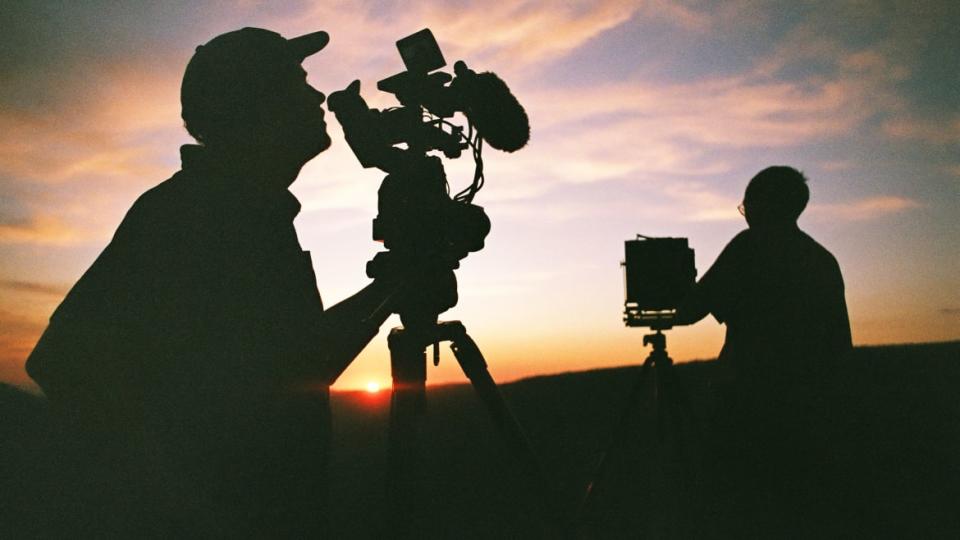
For now, however, the mission’s schedule is still in limbo. Officially, dearMoon is slated to launch before the year’s end, but almost nobody believes that timeline will hold. And the crew is still awaiting instructions for training. Hall has spent the last few months acclimating to a newfound mini-celebrity status and navigating the surreality of the experience. “I’m still finding that balance between being a crew member who’s public facing, and being a filmmaker, which requires me to stay as low-key as I can,” he said.
Thursday’s explosion hasn’t deterred him one bit. And Adkins hopes that SpaceX proceeds cautiously—for the crew’s sake, as well as the stability of the space industry.
SpaceX’s Starship May Finally Be Ready to Fly to the Moon—if It Doesn’t Blow Up
“Anytime we send civilians to space, I get very, very nervous,” she said. “A disastrous outcome would really change the narrative about how we think about space opening up to the masses more broadly. So I just hope that whatever timeline SpaceX pursues, I hope that they’re making sure they’re really ready before they proceed.”
Risks and all, Hall seems resolute in his decision, and is embracing the experience in its entirety—emotions and all.
“I was crying when the rocket got off the pad,” he said. “We all really believe this is actually going to work.”
Get the Daily Beast's biggest scoops and scandals delivered right to your inbox. Sign up now.
Stay informed and gain unlimited access to the Daily Beast's unmatched reporting. Subscribe now.

